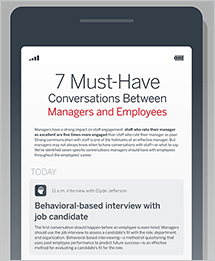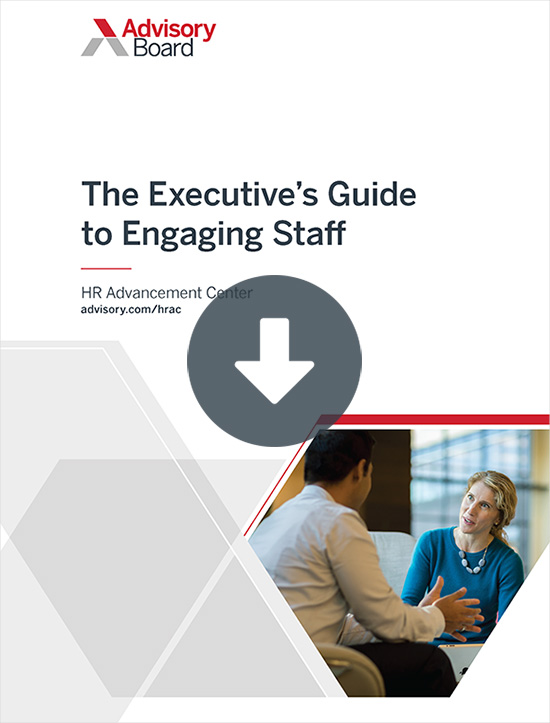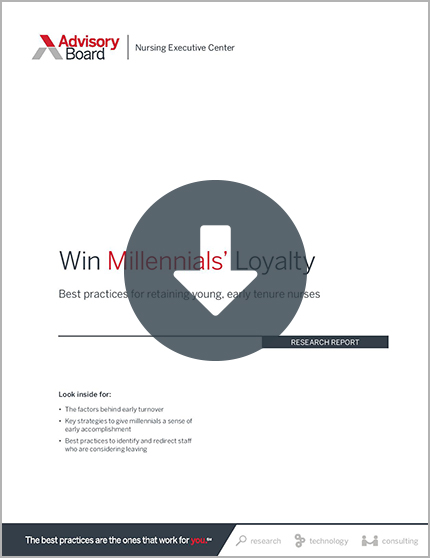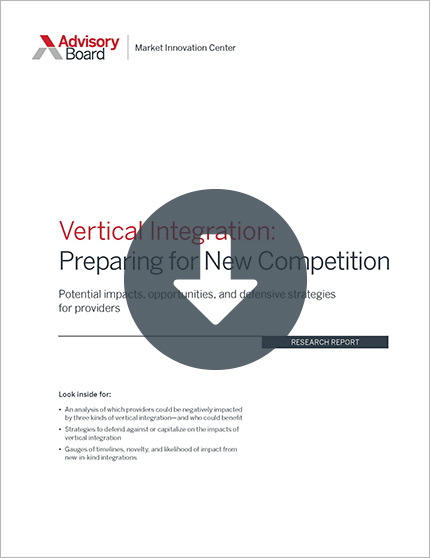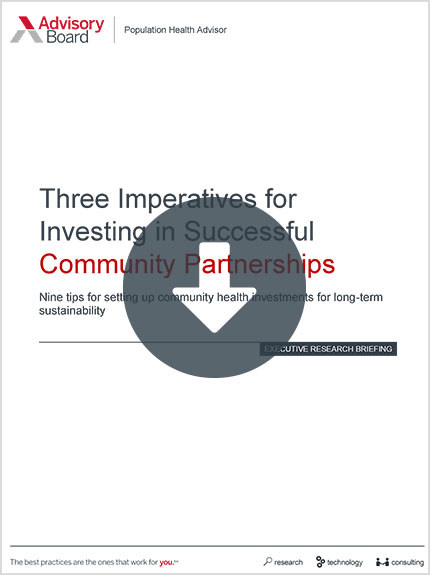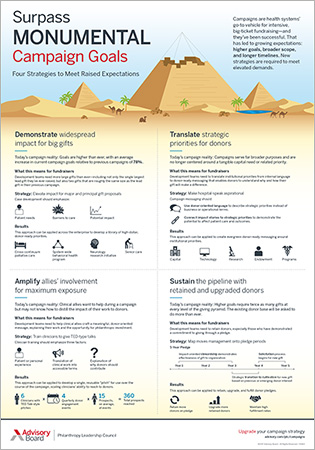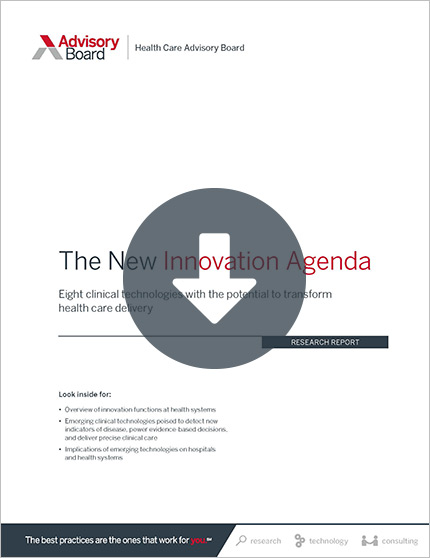Auto logout in seconds.
Continue LogoutWelcome to the "Lessons from the C-suite" series, featuring Advisory Board President Eric Larsen's conversations with the most influential leaders in health care.
In this edition, Randy Oostra, president and CEO of ProMedica, talks about the "life-changing" question that drove him to start over at age 30, ProMedica's burgeoning market in China, and what the HCR ManorCare acquisition means for the now-$7 billion system.
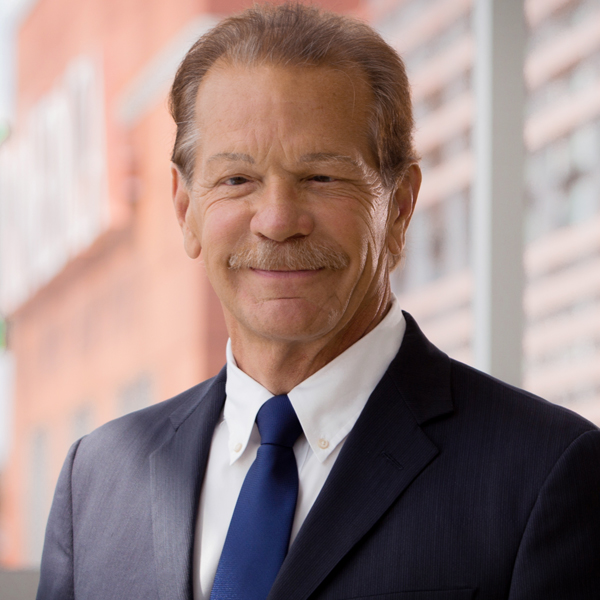
Randy Oostra, President and CEO of ProMedica
A career-defining question
Question: Randy, I'm keen to hear about ProMedica's acquisition of HCR ManorCare, both because an investment of this scale in post-acute care is distinct among your peers, and because I'm curious about the synergies between your legacy health system and the newly-acquired long-term care assets (now combined into a $7 billion+ system).
First, though, I have to ask about an anecdote—and I don't know if it's fictional or not—involving a life-changing conversation you had early on in your career with one of your mentors and former bosses, Carl Wagner. During a work trip, he asks a question that made you re-evaluate your entire career.
Randy Oostra: True story. I was about 28, 29 at the time, working at a company based in Sioux Falls, South Dakota that did lab work, mobile technology, and some consulting for hospitals in the Dakotas, Minnesota, Iowa, and Nebraska. On a trip to visit one of our hospital clients, Carl and I were sitting in the back of a single-engine airplane, and he asked me what I was going to be doing when I'm 50 years old. I remember saying, "What?" partly because those planes are very loud, but partly because I was like, "What are you asking me?"
But that morphed into a whole series of discussions—not only with him, but with my wife, too—about what kind of life I wanted. And I've determined over the years that many people are chasing happiness. We want to be part of something bigger than ourselves. And it's important to ask the question, "What do you want to do?", because sometimes you're on the complete wrong path to get there. And people often say, "Well, I can't do that," but I'm a good example that people can. You just have to make some sacrifices.
So when I started these conversations with Carl and my wife about what I wanted to do, it came down to three options: health care, religious counseling, or law. But when I took a class in a seminary about religious counseling, I realized very quickly that it wasn't for me, and when I got accepted to law school, my wife reminded me that while I liked the idea of being a lawyer, I never talked about actually being a lawyer. So that left health care.
Q: And you just completely re-started your education, profession, and lifestyle—all at age 30?
Oostra: Yes, exactly. My wife and I were 30 years old, we had one child and another on the way, and we started over; we quit our jobs, sold our house, sold our cars, and went back to school at the University of Minnesota to get our masters in health administration—my parents thought we were crazy.
Now, we decided to put aside the money we had from selling our house, so we lived on what we made by working a series of part-time jobs; my wife did income taxes, we cleaned the apartment building we lived in for free rent, and we cleaned a bank at night. But they were some of our happiest times because it was very basic. A big night was walking to a nearby mall and renting a movie.
Q: What was this experience like? Stepping away (voluntarily) from the success you had already achieved to re-group and re-start in pursuit of a new goal? Any key lessons learned?
Oostra: You know, Eric, I vividly remember that, while we were working as cleaners at the bank, the staff wasn't necessarily very nice to us; they would do things like drop paper on the floor in front of you. And then one night I was chatting to the person who ran that branch of the bank, and she was shocked to find out that I was a grad student. And from that day forward, the bank was cleaner.
I thought that was a sad lesson about how we treat people—how they had more respect for my role when they found out I was a grad student—so it's become one of those things that you check in your mind at times.
Q: This is a great segue into the theme of mentorship, which has always been very significant for you. You've been known to text a frontline employee to say, "How's it going? What's on your mind?"
Oostra: I think any way of staying connected is worthwhile, because with titles and positions, people may not always feel comfortable giving an honest answer. So I have found it very helpful to text people, call people, take people out for a cup of coffee, or even what we did this morning, when we delivered cookies to all our pediatric staff at Toledo Hospital to recognize their hard work.
Ultimately, you have to create a network of people who are prepared to tell you what others may not and make sure you're paying attention to the right issues. Those people are critically important, because none of us are perfect, and it's easy to insulate yourself. Now, you can't do it with tons of people, but you can sure do it with 20 to 30 people. And that's served me well; there are certain people I still talk to today whom I've worked with for 20 years, even though I may not see them every day.
HCR ManorCare
Q: Let's talk about the evolution of ProMedica from when you took the reins as CEO in 2009 through this complex, multi-billion alignment with HCR ManorCare. This agreement takes ProMedica from about $3.1 billion, with 17,000 employees and 13 hospitals, to more than $7 billion, with 56,000 employees across 28 states, plus an additional 400 facilities, ranging from skilled nursing facilities (SNFs) to rehab centers to home health agencies. Talk about the aspiration here, and what prepared ProMedica for such a significant investment in post-acute care?
Oostra: We would have described ourselves as a traditional integrated delivery system up until 2010, when a few things overhauled our thinking. First, we began to think about how to create scale in a region that's not growing. Second, we starting thinking more about the unaffordability of health care in our country. Third, we started screening for food insecurity, a move that snowballed to today, where we're screening for 10 social determinants of health, with the idea that as a mission-based nonprofit, we can't just do clinical services; we have to intervene more broadly.
And when you look at all of this together, you realize that our current model of specialists and primary care, and the balance between the two, isn't working. Fundamentally, we need a brand new model of care, and no one's building that, not with the Affordable Care Act and not with Medicare for All. Because right now, everything we talk about—patient-centered care, age-friendly health systems, value-based care, all these buzzwords—is about the patient fitting into our program. But patients want something different; they want to access information on their phones, they want transparency, accessibility, personalization. And all of that snowballed into thinking about how to drive care to the lowest-cost setting.
Re-ignite the growth engine: 3-part report series
Q: And with that perspective, the HCR ManorCare acquisition made sense.
Oostra: Exactly. Because when you think about how to begin to deliver all those things, you realize that you're thinking about delivering on an individual basis—and that pretty much starts in the patient's home and other lower-cost settings. So the more we thought about that, the more a relationship with HCR made sense. It gives us a much larger footprint in a market and in an area and in a service that we believe is the future major access point for health care in America.
You know, now that we're here, we just wish we would've come sooner.
Q: I'd like to hear your thoughts on the mechanics of this deal, because it's an unconventional and creatively structured agreement. HCR ManorCare was in bankruptcy, so you architected this deal with another Toledo company, Welltower.
Oostra: When we tried to purchase HCR by ourselves, it became apparent that we needed a partner. Welltower, then called Health Care REIT, came in, and we were able to structure an 80/20 deal. And we did two things: First, we converted HCR from a for-profit to a nonprofit, because that transition entails a significant expense reduction—overnight, we picked up $30 to $40 million. Second, because of the way we structured the real estate deal, we reduced annual rent payments by several hundreds of millions of dollars.
And between the combinations of the Welltower agreement, the rate reductions, and the nonprofit conversion, we had a fair amount of time to identify and articulate where the synergies and growth opportunities were going to be. That said, we had an issue from a cashflow standpoint: Even though we have the same amount of cash after the deal as before, our cash-on-hand measured in days of expenses dropped fairly dramatically, because our expenses basically doubled.
Q: This is a fascinating acquisition, especially considering how active private equity has been in health care ($63 billion globally last year) and in post-acute specifically (TPG Capital and Welsh Carson partnering with Humana to take on Kindred, etc.). But it's not an area hospitals are investing in en masse. You and Sanford—with its 2018 acquisition of Good Samaritan—are really the only two nonprofit systems making such a significant play into this space,.
Oostra: Yes I think your characterization is right. What's interesting is that in private equity, as you pointed out, everyone is buying these kinds of entities left and right—so the question for us as a health system is, "Why are they buying all this stuff and we're not?" Rather than just be traditional and do only hospitals, why don't we think more broadly—not only about how to take care of people and follow the demographics, but also to make sure we're not letting private equity take opportunities away from anchor institutions that need this to survive?
And frankly, I wish we were in a position to buy more of it, because a) that's where the future of health care is going, and b) the strong economics on a lot of those lines of businesses would help moderate some of the other pressures relative to the traditional delivery system.
Q: I'm curious how you're thinking about the economics of the component pieces of this new acquisition—namely, HCR's 168 SNFs and 54 assisted living centers. Not all post-acute services are faring equally well; SNFs in particular have been challenged.
Oostra: You're exactly right, but in our deal, we were able to keep the stronger SNFs while about 75 that were either in areas without the necessary critical mass or that weren't performing were divested mostly prior to the deal. So that gave us a critically important opportunity to make sure the organization was right-sized from the start.
Another factor to consider is how demographics will change in the future, because a small demographic change in occupancy—say, a shift from 82% to 84% occupancy—makes a huge difference when you look at the overall economics. And of course, we were also able to lower HCR's expense basis through its nonprofit status, and we're planning to infuse a bunch of capital in updating and improving HCR's facilities, which will lead to increased census.
But we're not naive. It's going to be a slow go, but we believe that we can weather the storm for the next couple of years and then build these facilities up from there. Because again, when you look at all the factors here—how 30% or more of health care could be delivered at home, how 78% of consumers would receive hospital care at home if it's less costly.
And we can't underestimate employers, because they are going to keep driving us to the lowest-cost setting. And if they can't tolerate today, with health care accounting for 18% of the GDP, how are they going to tolerate 20%, 22%, 25%? I think we're going to see some radical changes.
Q: Let's turn the lens to governance for a moment. I remember years ago you told me that when you partnered with new hospitals, you merged the board (without reducing the size)—at one point, in fact, you were up to 450 board members. What's the strategy behind this approach? Are you taking the same approach in the HCR arrangement?
Oostra: Yes, we've been up to 500 board members. We like the idea of keeping local boards with large numbers—it's the right thing to do, and it really falls to local leadership to engage people on a local basis. However, with the HCR acquisition, we've decided to take our parent board down from 25 members to 13 to reflect the difference in the organization.
Before, we thought of ourselves much more as a local, regionally integrated delivery system. But now, with our larger footprint, we're more focused around the organization's various business lines.
Paramount
Q: Let's talk about that local, regionally integrated delivery system. I'm particularly interested in your experience on the health plan side, with your successful insurance arm Paramount. ProMedica is one of the few integrated payer-provider systems out there, so your perspective on integration is of interest.
Oostra: Yes, we've had Paramount for 25 years. We have about 350,000 lives in Paramount today, with about 75,000 in commercial, 15,000 in Medicare, and 240,000 or so lives in Medicaid. And since we're statewide in Ohio, we can take risks there, even though we don't have facilities in many of the markets. For instance, we dabble in the exchange market—we have about 5,000 members there—and we have another 250,000 lives in a dental insurance company we own.
Q: I have to think this experience was part of what emboldened you to take on HCR ManorCare and think more expansively about the continuum of care.
Oostra: You know, we've historically thought of ourselves as a vertically integrated payer-provider, but now we think of ourselves as this health and well-being organization that's going to become increasingly integrated as we dive into social determinants, senior care, home care, and all of that.
But to your question, the beauty of this is that we've always had an insurance company thinking critically about how to deliver services and keep people out of hospitals, while also having hospitals. And that tension has cultivated this really good, healthy dynamic; we've always had these spirited fights—such as when the hospitals want to advertise the EDs, which is just like blowing a gasket for the health plan—which helps us use our data to improve care. For case management especially, we can align our hospital and insurer perspectives and protocols and treat patients in a much more streamlined, collaborative way than if we didn't have an insurance plan.
Upcoming webconference series
Wednesday, May 29
Care Management 101
Tuesday, June 4
Health Equity 101
Thursday, June 13
Social Determinants 101
Tackling social determinants
Q: I'd like to step back a bit and ask about social determinants of health, as I know this is both a personal and an organizational passion for you and ProMedica. You've been one of the pioneers in this space for years.
Oostra: You know, I think Jim Collins captured it. He wrote a great book called ''Good to Great in the Social Sectors,'' where he said, "It's not how much money you make. It's the impact you make relative to your resources."
Now, who has more resources in our communities than nonprofit health care? When you look at the dollars health care systems have, our nonprofit status, and the talented and mission-based people we have, why wouldn't we use that chassis across the United States and invest that same amount of money on a new focus: social determinants of health? That seems awfully logical to us—and besides, if we don't start investing in our communities, who will?
So that notion led us to a whole variety of anchor investments in our community. We're partnering with family foundations and other philanthropic organizations on access to healthy food, hunger screening, and housing—just to name a few.
It all goes back to that Collins quote about making an impact relative to your resources. It's easy to say you can't get paid for it but I think the idea here is to just get started small. Like anything you can embed those in your policies and procedures and then figure out ways to do it more economically.
Q: I think the game is moving in this direction—with Montefiore, UnitedHealthcare, and others investing in housing, plus all the conversation nationally about social determinants—but the foundational challenge remains: How do you get paid for this? Because again—when done correctly – screening and addressing social determinants is, appropriately, demand-destructive. So tell me, how much of what you've pioneered is based on you being an integrated payer-provider? And given that you were such an early mover here, what advice do you have for peers who don't have the benefit of a Paramount?
Oostra: We made some investments when we started this work, but along the way, something interesting happened: People started helping us philanthropically. For instance, early on, the philanthropist Russell Ebeid gave us several millions of dollars for an inner-city grocery store, which has since expanded to include a teaching kitchen, financial opportunity coaches, and a training program. And the banks have Community Reinvestment Act (CRA) money, so they've offered us funding.
We're also partners with the Local Initiative Support Corporation (LISC), a Community Development Financing Institution (CDFI) that came in on top of everything else and created with us a $30 million loan pool to help startup businesses with an emphasis on women and minorities. We're also investigating partnerships with a number of nonprofit housing companies, because we're getting ready to build some housing ourselves.
So the example here is that we've found we can build successful philanthropic partnerships with banks, private foundations, and with some of these nontraditional entities like CDFIs. It's just that the health care industry at large has been slow in working with these groups because we've been so insularly focused on the clinical aim.
Q: Now, a lot of your peers might argue that absent that philanthropic support, they simply can't pay for these kinds of initiatives.
Oostra: Yeah, people go, "Well, you know, we don't get paid for it." But you have to make an impact relative to your resources, right? Look at your balance sheets, look at the size of your organization, look at your charitable mission—even if you just commit to doing your share, that's probably a lot bigger than anybody else's share, based purely on the size of your organization. Adopting that perspective led us to a whole variety of anchor investments in our community to address social determinants.
And the idea here is to start small. If you can make small changes in your policies and procedures, you can figure out ways to do it more economically.
Looking overseas
Q: For a long time now, Randy, you've been talking about China, which is one of the most dynamic health care pioneers in genomics and advanced health care analytics (AI/ML etc.). In fact, I believe you've traveled there twice in just the last year to talk about acquiring hospital consulting contracts, and you've actively pursued an arrangement with at least one Chinese genomics company. So first, give me just your thoughts on China as a market for ProMedica.
Oostra: Chinese investors have a fairly significant presence in Toledo, so I've had a lot of opportunities to talk to them about different opportunities over the last decade or so. And broadly, we've just been very, very impressed with how their goals are our goals: They share an interest in American health care, in creating a style of medicine that incorporates the best in the world, and—most importantly—in looking at the health and well-being of the people they serve. And they are very open to new ideas, both in and beyond the clinical realm; we've had really positive exchanges with hospitals, insurance companies, developers, genetic companies, and long-term care organizations.
Ultimately, this is great for both of us, because they are looking for American partners and we want these international opportunities to drive innovation and recruit and retain talent in an increasingly global society. We've sent doctors and teams over to our partnering hospital in China, and they've sent teams over here, and we plan to do that kind of knowledge exchange more robustly in the future. It's just been a great back-and-forth.
Q: How many opportunities are you currently navigating?
Oostra: We've signed an agreement with Bowan Women's and Children's Hospital in Shenzhen, so a lot of our work has been focused in the Shenzhen area, which has a population of over 25 million people.
Beyond that, we probably have about 20 different opportunities in various stages as part of our integrated system, and when we were over there last, we talked about at least a dozen really solid opportunities ranging from business relationships, to hospital partnerships, to post-acute partnerships, to genetics. That said, we're not there to put significant capital into any facilities; it's more a matter of consulting management in partnering opportunities.
Q: You've mentioned that you're interested in companies in China that focus on the genetic testing space and personalization of medicine. But while there's a lot of talk around personalized medicine and the clinical application of genomics and proteomics, I think the rhetoric has run ahead of its practical application. There's been such a proliferation of genetic tests that it's caused some challenges—primary care doctors might not have the skills, technology or frankly the time to interpret them correctly. How are you thinking about the incorporation of genetic testing generally, given that you seem to be at the forefront of the movement?
Oostra: You hit it right on the head. When we look at genomics and personalized medicine, we have physician after physician who goes, "I have these people walk in my office with all this information. I don't know what to do with it." So we've talked with our genetics partner about exactly that. Genetics testing is great, but now let's talk about what we need to do to help our clinicians understand and act on this information, especially in a social determinants world. I had a CEO from a company call and tell me that my team reminded him of a ground crew of an airline. I took it as a compliment because it shows that our folks know how to get things done.
But when the information is used in the correct manner, we hear about how it's life-changing for people with certain cancers or conditions. So we want to invest more time and effort there, and we've had more discussions and more progress with this particular company than we have with anyone else. It's good for us, good for the company we're talking with, and good for clinical care.
Looking back, and wrapping up
Q: I'd like to take a step back and ask about your background, because you've spoken before about how deeply your Dutch heritage and experience as a second-generation immigrant shaped your outlook and work ethic. If memory serves, neither of your parents had much traditional schooling?
Randy Oostra: No, neither had the opportunity to go to school for very long. Both my parents emigrated as children from the Netherlands, and because both were the oldest in their families, they were required to work from a very young age. But as a result, my parents were very, very focused on education for their children, because they viewed that as the ticket to a better life.
Of course, that didn't mean we didn't have to work. As children, all of us started working when we were in grade school—that was just expected. It's any immigrant story: a strong work ethic, respect your elders, work hard.
Q: You started working in grade school? What was your first job?
Oostra: When I was in fifth grade, I got my first job working at a livestock auction house after school and on the weekends. I did that all the way through high school as a part-time job.
Q: Wow. As we wind down, I want to make sure to ask about how your faith influences your work. Because I know how integral your faith is to you as a leader, father, husband, and friend, and I always find it fascinating to hear how people of faith think about incorporating that in their professional work, especially if—like you—they are working in a secular system.
Oostra: And what's interesting is that, even though I don't work in a faith-based organization, thinking about a patient holistically means we have to think about faith and all the other social determinants that make them up.
So while I have my personal faith as Dutch Reformed, we take care of everybody who walks through our door, whatever faith they are, whatever their personal beliefs are, whether or not those beliefs are contrary to a Christian faith—as we tell people, we take care of the person who was shot and we take care of the shooter. And whether or not we agree or whether we're from the same faith, it's our job. What my personal faith has brought is a degree of ethics, a sense of right and wrong, and a strong work ethic.
Q: Let's close our interview with a two part question. First, who were your mentors along the way toward whom you feel gratitude?
Oostra: I had some of the pivotal moments of my early career when I worked for Terry O'Rourke at Blodgett Medical Center in Grand Rapids, Michigan. I went there because there was a Minnesota alum working there. I remember handing him a business plan and saying, ""This is so good. You won't have any questions."" And he would reply, ""Watch."" And he'd come back with 30 questions I had never thought of. He knew our business in and out and taught me to think that way.
You know, if a nail falls on the floor in your hardware store, you pick it up. And you turn off the lights and make frugal decisions. But sometimes people don't view their institutions that way—but Terry clearly did and that was one of the things he emphasized to us. Much of what I do today, how I think, business planning skills, all come from just being around Terry for five years.
Q: And the second part of the question is a slightly modified version of the question Carl asked you all those years ago: Who do you want to be when you're 70, and how do you think about that?
Oostra: I don't think the values will change. As Gallup's book says, the difference between a good life and a great life is community, and these jobs offer us the opportunity to realize the importance of community. So when I think about what's next for me, I think it really comes down to doing more—and spending more time—to try to make things better in communities.
Get more lessons from the C-suite
Check out Eric's recent must-read interviews with top hospital and health system leaders:
Don't call THR a 'hospital system': Inside CEO Barclay Berdan's vision for health care's future
Barclay Berdan, CEO of Texas Health Resources, talks about the ""unprecedented challenge"" he faced just a few months into the job, why he won't call THR a ""hospital system, and how he helped establish the world's largest Blue Zones community—in Fort Worth. Read our interview with Barclay.
'A little bit of a pirate': How Kelby Krabbenhoft built a $6B system—and where he's taking Sanford next
Kelby Krabbenhoft, president and CEO of Sanford Health, talks about the unprecedented CEO-philanthropist partnership behind Sanford's rapid growth, why a successful leader needs to be ""a little bit of a pirate, and the merger that will make Sanford a nearly $6 billion health system. Read our interview with Kelby.
Marc Harrison promised to turn Intermountain into a 'Tesla.' He wasn't kidding.
Marc Harrison, president and CEO of Intermountain Healthcare, talks about Intermountain's recently announced strategic reorganization, previews the launch of a ""virtual hospital"" to better serve rural communities, and shares the surprising worry that keeps him up at night. Read our interview with Marc.
Subscribe to At the Helm
To get more of our top insights for CEOs and other C-suite executives, make sure you're subscribed to the ""At the Helm"" blog.
"
Don't miss out on the latest Advisory Board insights
Create your free account to access 1 resource, including the latest research and webinars.
Want access without creating an account?
You have 1 free members-only resource remaining this month.
1 free members-only resources remaining
1 free members-only resources remaining
You've reached your limit of free insights
Become a member to access all of Advisory Board's resources, events, and experts
Never miss out on the latest innovative health care content tailored to you.
Benefits include:
You've reached your limit of free insights
Become a member to access all of Advisory Board's resources, events, and experts
Never miss out on the latest innovative health care content tailored to you.
Benefits include:
This content is available through your Curated Research partnership with Advisory Board. Click on ‘view this resource’ to read the full piece
Email ask@advisory.com to learn more
Click on ‘Become a Member’ to learn about the benefits of a Full-Access partnership with Advisory Board
Never miss out on the latest innovative health care content tailored to you.
Benefits Include:
This is for members only. Learn more.
Click on ‘Become a Member’ to learn about the benefits of a Full-Access partnership with Advisory Board
Never miss out on the latest innovative health care content tailored to you.
